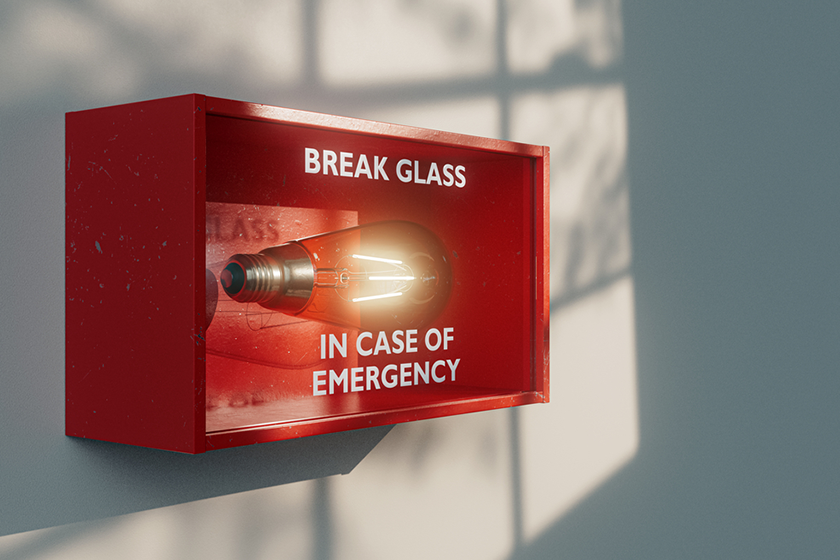7 Components Of A Commercial Fire Alarm System

When it comes to safeguarding lives and property from fire hazards, a well-designed commercial fire alarm system is indispensable. These systems form intricate networks of devices that collaborate to detect, alert, and manage potential fire incidents. Familiarizing yourself with the essential components of a fire alarm system can help ensure that your safety protocols are effective and adhere to prevailing fire safety regulations.
At Fire Safety Alarms, we pride ourselves on offering advanced solutions that integrate seamlessly into various commercial environments, enhancing overall safety with reliability and precision.
Fire Alarm Control Panel: The System’s Brain
Central to any fire alarm system is the Fire Alarm Control Panel (FACP), often regarded as the operation’s brain. This crucial hub oversees all signals from devices linked within the system, including detectors and manual call points. When a potential fire is detected, the FACP processes the information and triggers the appropriate response, whether that involves activating notification devices or interfacing with fire alarm services for immediate action.
The FACP is designed to be user-friendly, providing clear information about system status and any faults or alarms. It allows for manual override and control, which can be crucial during a false alarm or when testing the system. The panel also logs data which can be critical for investigating after an incident or improving system responses.
Initiating Devices: Detecting the Danger
Initiating devices are critical components that detect the presence of fire or smoke and initiate the alarm system. These devices are categorized into two types: manual and automatic.
- Manual Initiating Devices: These include traditional pull stations where an individual must physically activate the alarm. Manual stations are essential as they provide a fail-safe method for triggering the alarm system in case automatic devices fail or if a fire is noticed before sensors detect it.
- Automatic Initiating Devices: These devices automatically detect fire indicators, such as smoke or excessive heat. Smoke detectors, heat sensors, and gas detectors are common examples. They play a vital role in early detection, often identifying a fire before it spreads, which can be crucial for allowing safe evacuation and minimizing damage.
Notification Devices: Alerting Occupants
Once the threat of a fire is confirmed, notification devices are activated to alert the building’s occupants. These devices are designed to ensure that everyone in the building is aware of the danger and can evacuate safely. Common notification devices include:
- Audible Alarms: These include devices like bells, horns, and sirens that produce high-volume sounds to warn people about the emergency.
- Visual Alarms: These alarms use strobe lights and other flashing mechanisms to provide visual cues, essential in loud settings or for aiding individuals with hearing impairments.
- Voice Communication Systems: These systems can provide live or pre-recorded instructions for safe evacuation, often used in larger or more complex buildings like malls or high-rises.
In addition to these primary components, a robust commercial fire alarm system also incorporates various support mechanisms to enhance functionality and reliability.
Primary Power Supply: The Lifeline
A reliable power source is fundamental for the continuous operation of a fire alarm system. Typically, commercial fire alarm systems are powered by a 120- or 240-volt AC primary power supply sourced from the utility company. This power ensures that the fire alarm system remains active during regular conditions and is crucial for the system’s ability to monitor environments and remain ready to activate at the first sign of a fire.
Backup Power Supply: Ensuring Uninterrupted Operation
In the event of a power outage, a backup power supply is indispensable. Commercial fire alarm systems are equipped with secondary power sources, such as batteries or emergency generators, to ensure they continue to function even when the primary power source fails. These backup systems are automatically engaged when an interruption in the primary power supply is detected, maintaining the system’s operational integrity and ensuring that protection is not compromised.
The backup power supply is not just a regulatory requirement; it is a critical fail-safe that ensures the safety mechanisms remain operational during potentially chaotic situations where power stability cannot be guaranteed.
Fire Safety Interface Units: Bridging the Gap
Interface units in a fire alarm system serve as critical links between the fire alarm system and building management systems or other safety-related systems. These units allow for the integration of various building functions with the fire alarm system, such as HVAC shutdown, elevator capture, and door releases. This integration is essential for comprehensive safety strategies, ensuring that all systems within a building respond appropriately during a fire.
For example, upon detection of smoke, the fire alarm system can trigger the HVAC system to shut down, preventing the spread of smoke and fire throughout the building through the air vents. Similarly, interface units can ensure that doors automatically unlock, facilitating quicker and safer evacuation.
Maintenance and Monitoring: Essential for System Health
Regular maintenance and monitoring are crucial for ensuring that all components of a fire alarm system function correctly. This involves routine inspections, testing, and servicing of every component, from control panels and initiating devices to notification appliances and power supplies. Maintenance ensures that potential issues are identified and addressed before they can affect the system’s functionality.
Additionally, modern fire alarm systems often include remote monitoring capabilities, which allow fire alarm services professionals to oversee system status and respond to alarms from off-site locations. This capability enhances the system’s reliability by ensuring that any discrepancies are promptly addressed, often before building occupants are even aware there is an issue.
Comprehensive Protection Through Advanced Technology
The components of a commercial fire alarm system work together to create a robust defense against fire hazards, safeguarding lives and property. At Fire Safety Alarms, we are committed to integrating advanced technologies and comprehensive solutions to enhance these systems further.
Our goal is to ensure that every commercial environment is equipped with a fire alarm system that not only meets but exceeds, the necessary safety standards. Through continuous improvement and dedication to safety, we help create environments where businesses can thrive without the looming threat of fire emergencies
